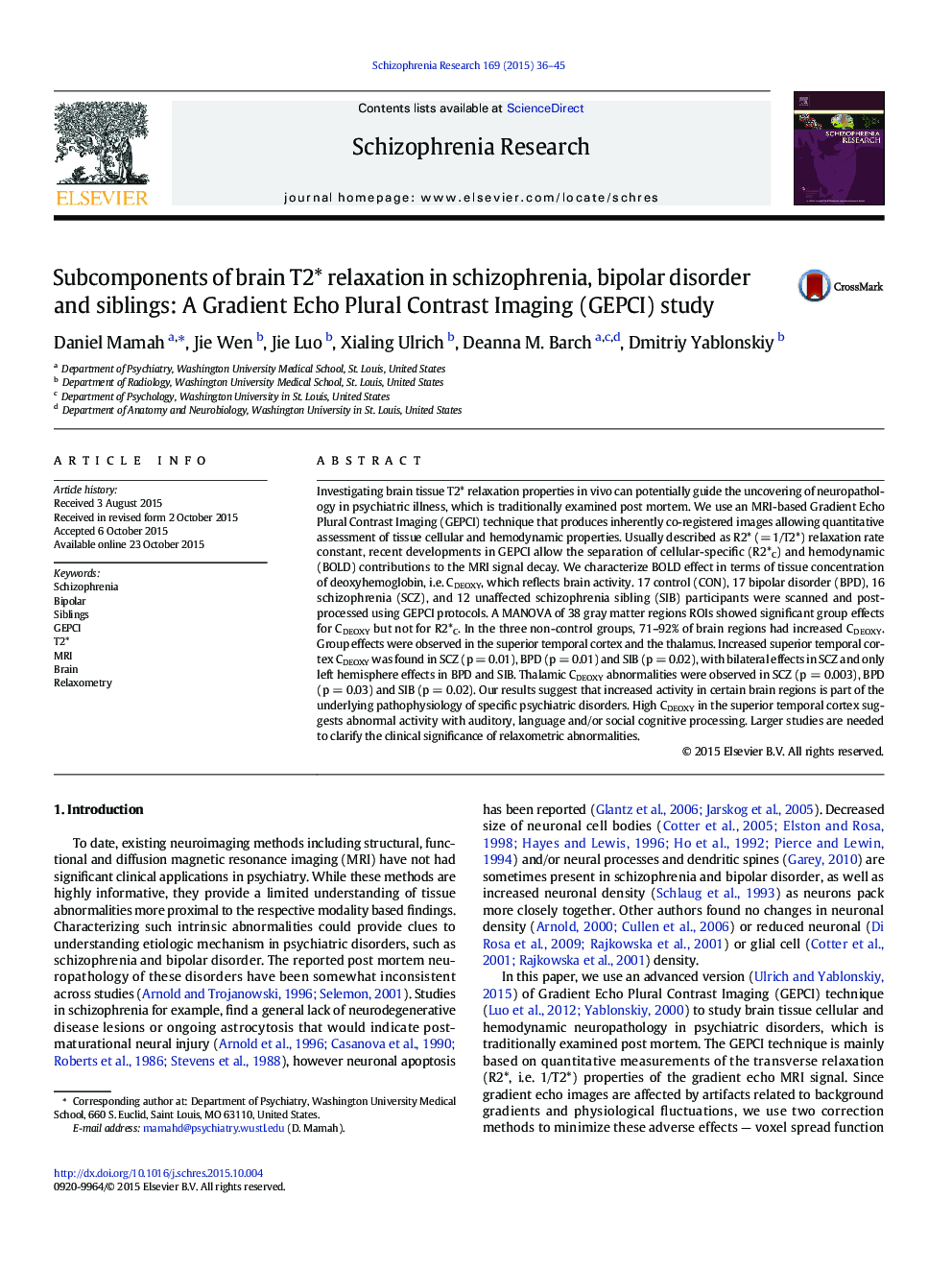| Article ID | Journal | Published Year | Pages | File Type |
|---|---|---|---|---|
| 6823315 | Schizophrenia Research | 2015 | 10 Pages |
Abstract
Investigating brain tissue T2* relaxation properties in vivo can potentially guide the uncovering of neuropathology in psychiatric illness, which is traditionally examined post mortem. We use an MRI-based Gradient Echo Plural Contrast Imaging (GEPCI) technique that produces inherently co-registered images allowing quantitative assessment of tissue cellular and hemodynamic properties. Usually described as R2* (= 1/T2*) relaxation rate constant, recent developments in GEPCI allow the separation of cellular-specific (R2*C) and hemodynamic (BOLD) contributions to the MRI signal decay. We characterize BOLD effect in terms of tissue concentration of deoxyhemoglobin, i.e. CDEOXY, which reflects brain activity. 17 control (CON), 17 bipolar disorder (BPD), 16 schizophrenia (SCZ), and 12 unaffected schizophrenia sibling (SIB) participants were scanned and post-processed using GEPCI protocols. A MANOVA of 38 gray matter regions ROIs showed significant group effects for CDEOXY but not for R2*C. In the three non-control groups, 71-92% of brain regions had increased CDEOXY. Group effects were observed in the superior temporal cortex and the thalamus. Increased superior temporal cortex CDEOXY was found in SCZ (p = 0.01), BPD (p = 0.01) and SIB (p = 0.02), with bilateral effects in SCZ and only left hemisphere effects in BPD and SIB. Thalamic CDEOXY abnormalities were observed in SCZ (p = 0.003), BPD (p = 0.03) and SIB (p = 0.02). Our results suggest that increased activity in certain brain regions is part of the underlying pathophysiology of specific psychiatric disorders. High CDEOXY in the superior temporal cortex suggests abnormal activity with auditory, language and/or social cognitive processing. Larger studies are needed to clarify the clinical significance of relaxometric abnormalities.
Related Topics
Life Sciences
Neuroscience
Behavioral Neuroscience
Authors
Daniel Mamah, Jie Wen, Jie Luo, Xialing Ulrich, Deanna M. Barch, Dmitriy Yablonskiy,
